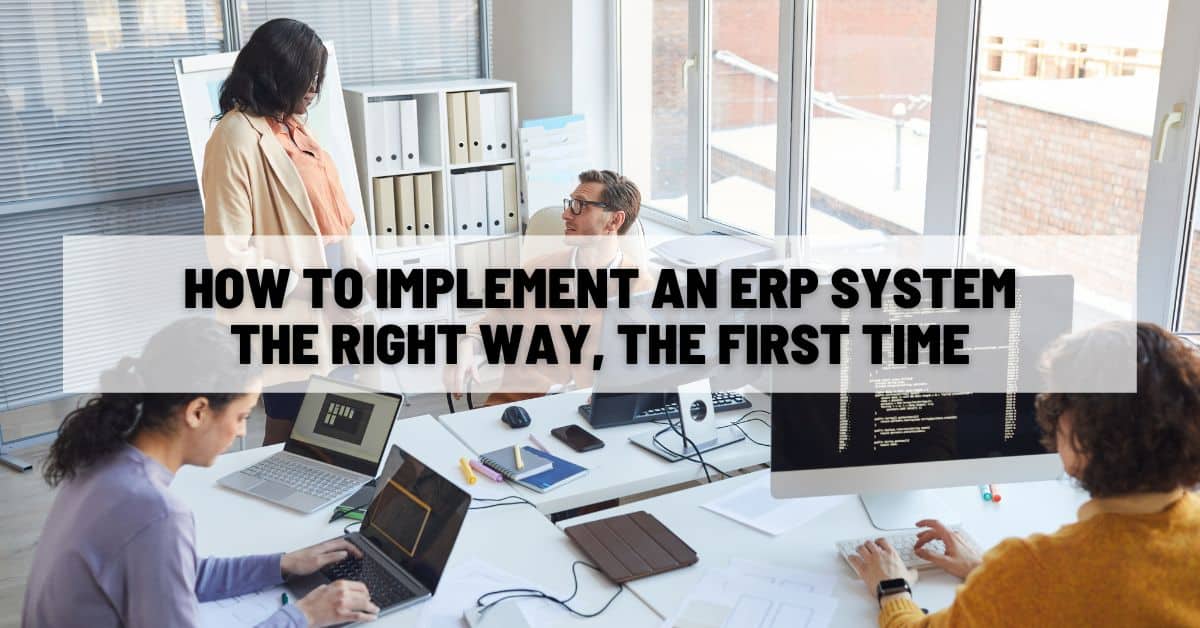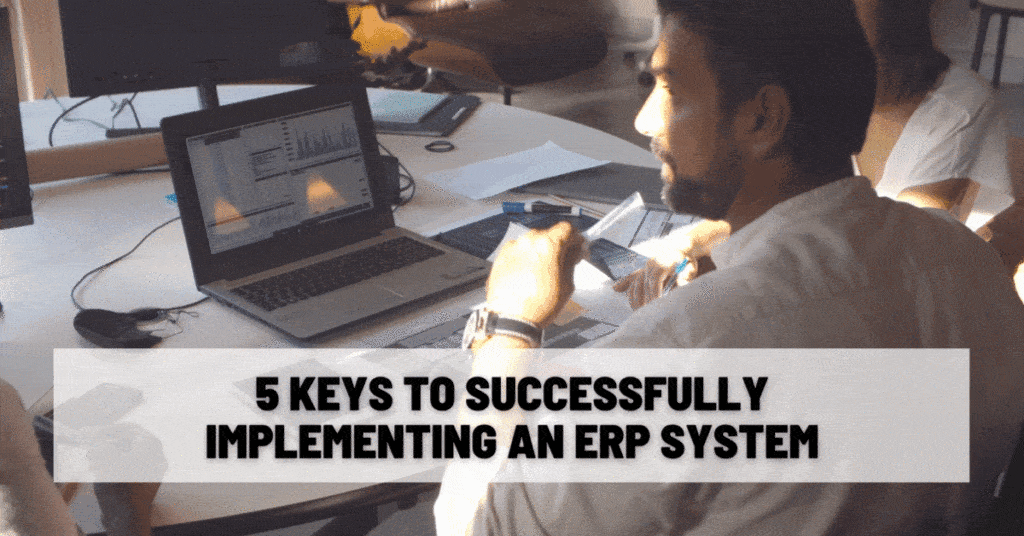5 Keys to Successfully Implementing an ERP System
When you’re setting out to implement an ERP system, you’ll inevitably run into horror stories from colleagues, competitors, and complete strangers alike.
Analysis firm Gartner estimates that three quarters of all ERP implementations fail to meet their objectives, so it’s no surprise that people can be reluctant to try.
Here’s the bottom line: implementing an ERP system is a multi-stage process, and the whole process can be derailed at any stage unless everyone on your staff and your vendor’s team is on board. So, how do you keep your ERP implementation on track and headed for success?

How to Implement an ERP System the Right Way, the First Time
Like we’ve talked about before, an ERP implementation is a complex process at the best of times. It takes about 60 to 90 days at minimum, and that’s with a relatively small business and a highly skilled and experienced implementation team.
Naturally, you’ll want some mile markers along the way to make sure you’re still going in the right direction.
We’ve compiled the 5 most important hallmarks of an ERP implementation that’s headed for success. They’re in chronological order below, so you can check them off as the process rolls on.
- Commitment: All of the decision makers are on board with the project before beginning. If people are not able to see the benefits of the move, the tasks will drag out and will not get the attention they require.
- Scope: Early on (before a sale has been agreed to), you have communicated your requirements to the ERP vendor, and they have demonstrated that the product meets those requirements.
- Detail: Each department of your business has time with your vendor’s implementation team to communicate the nitty-gritty details of their processes and their unique needs. This phase should take somewhere in the neighborhood of 3-4 weeks when done properly.
- Training: Your staff has had a chance to train on the new system. For bonus points, this should take the form of a ‘sandbox’: a rough-and-ready import of your data loaded into a test installation of the ERP software, so that your staff can practice on the system they’ll be using with familiar data. This step should be used both to get your staff up to speed and to revise your configuration decisions.
- Conviction: You recognize that there is no perfect time to go live. You know that an ERP rollout will always be disruptive, and you’re willing to do it anyway, because you know the payoffs will be worth it.
For more context on when these qualities will be relevant, you can check out our step-by-step ERP implementation guide.
To find out how AcctVantage ERP can support your ongoing business growth and success, click here to get in touch with us.




